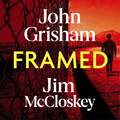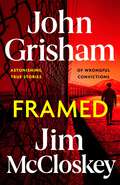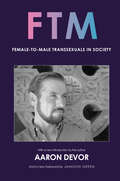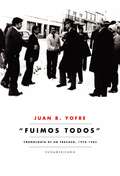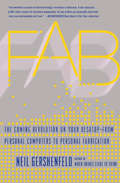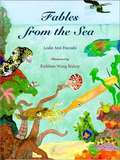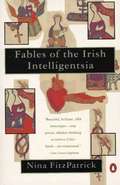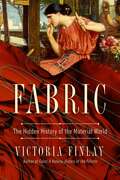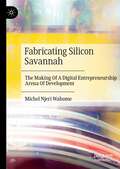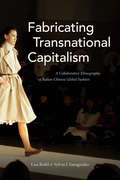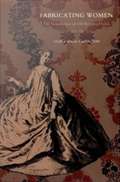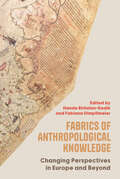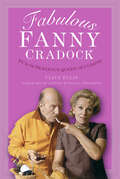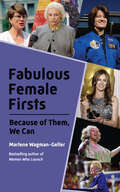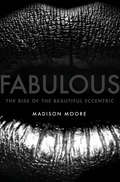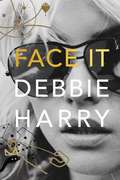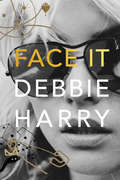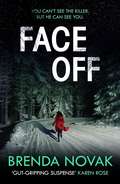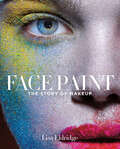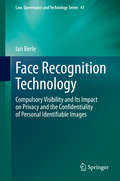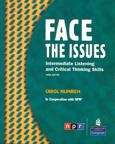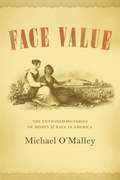- Table View
- List View
FRAMED: Astonishing True Crime Stories of Wrongful Convictions, told as only John Grisham can
by John Grisham Jim McCloskeyTen wrongful conviction cases. Twenty-one innocent people. Framed tells ten stories with a truth more shocking than fiction.John Grisham, the master of the legal thriller, teams up with Jim McCloskey, who has dedicated his life to exonerating innocent people, to uncover stories that shine an astonishing light on miscarriages of justice. All the cases in this book are simply extraordinary. And all are true.Joe Bryan suffered the unbearable tragedy of his wife's murder, only to be tried and found guilty of the crime himself - despite being 120 miles away at the time it was committed. Clarence Brandley spent nine years on Death Row, coming to within six days of execution, before new evidence cleared him of all charges. And in the case of the Norfolk Four, police and prosecutors continued to arrest innocent people until not one but four men were behind bars.Impeccably researched and told with page-turning conviction, in Framed, these cases are finally laid bare. Most importantly, they show how truth can prevail and how freedom can be won when all seems lost.'Each of these stories is told with astonishing power. They are packed with human drama, with acts of shocking villainy and breathtaking courage. But these are more than just gripping true stories - they are a clarion call for reforming the tragic flaws in our criminal justice system' David Grann, New York Times bestselling author of Killers of the Flower Moon
FRAMED: Astonishing True Crime Stories of Wrongful Convictions, told as only John Grisham can
by John Grisham Jim McCloskeyTen wrongful conviction cases. Twenty-one innocent people. Framed tells ten stories with a truth more shocking than fiction.John Grisham, the master of the legal thriller, teams up with Jim McCloskey, who has dedicated his life to exonerating innocent people, to uncover stories that shine an astonishing light on miscarriages of justice. All the cases in this book are simply extraordinary. And all are true.Joe Bryan suffered the unbearable tragedy of his wife's murder, only to be tried and found guilty of the crime himself - despite being 120 miles away at the time it was committed. Clarence Brandley spent nine years on Death Row, coming to within six days of execution, before new evidence cleared him of all charges. And in the case of the Norfolk Four, police and prosecutors continued to arrest innocent people until not one but four men were behind bars.Impeccably researched and told with page-turning conviction, in Framed, these cases are finally laid bare. Most importantly, they show how truth can prevail and how freedom can be won when all seems lost.'Each of these stories is told with astonishing power. They are packed with human drama, with acts of shocking villainy and breathtaking courage. But these are more than just gripping true stories - they are a clarion call for reforming the tragic flaws in our criminal justice system' David Grann, New York Times bestselling author of Killers of the Flower Moon
FTM: Female-to-Male Transsexuals in Society
by Jamison Green Aaron DevorIn this ground-breaking study, Aaron Devor provides a compassionate, intimate, and incisive look at the life experiences of forty-five trans men. Emerging into 21st-century political and social conversations, questions persist. Who are they? How do they come to know themselves as men? What do they do about it? How do their families respond? Who are their lovers? What does it mean for everyone else? To answer these and other questions, Devor spent years compiling in-depth interviews and researching the lives of transsexual and transgender people. Here, he traces the everyday and significant events that coalesce into trans identities, culminating in gender and sex transformations. Using trans men's own words as illustrations, Devor looks at how childhood, adolescence, and adult experiences with family members, peers, and lovers work to shape and clarify their images of themselves as men. With a new introduction, Devor positions the volume in twenty-first century debates of identity politics and community-building and provides a window into his own self-exploration as a result of his research.
FUIMOS TODOS (EBOOK)
by Juan B. Yofre"Nadie fue", el libro anterior de Juan B. Yofre, se convirtió en una de las grandes sorpresas editoriales de los últimos años. Sobre la base de fuentes privilegiadas, narraba el desarrollo histórico de la Argentina de los años 70 hasta la caída de Isabel Perón. Fuimos todos es la fascinante continuación de aquel éxito: retoma los avatares de nuestra historia desde el 24 de marzo de 1976 hasta la aventura militar de Malvinas -que llevó al fin del Proceso- y sus consecuencias. Yofre repite aquí su procedimiento periodístico, exhuma documentos, apuntes, informes, cartas, que ven la luz por primera vez. Hallazgos que muestran aspectos absolutamente desconocidos de un período de violencia y dan cuenta del enfrentamiento entre los argentinos, ya no solamente de las Fuerzas Armadas y las organizaciones terroristas sino también de las continuas luchas intestinas del propio régimen castrense. Un eslabón más en la historia de la decadencia política argentina. Exhaustivamente documentado, polémico, revelador, Fuimos todos expone los hechos, como dice el autor, "sine ira et cum studio", es decir, para que el lector saque sus propias conclusiones y con la honesta intención de evitar que se repitan los nefastos errores del pasado reciente. El teniente general Jorge Rafael Videla asumió la presidencia de la Nación el 29 de marzo de 1976, luego de deponer cinco días antes a la presidenta constitucional María Estela Martínez Cartas de Perón, más conocida por su nombre artístico de "Isabel". Al poco tiempo, Videla comenzó a realizar visitas a ciudades del interior. La foto lo muestra durante un viaje a la austral ciudad de Ushuaia, Tierra del Fuego, en el invierno de 1976. Como evidencia la instantánea, a pesar del rigor climático la gente se acercaba a saludarlo. Es más, si se pone la atención se verá que un hombre salió de un lugar cerrado, sólo con un suéter, para estrechar su mano. Es una foto atípica que muestra en pequeña escala el grado de aquiescencia del que gozó el gobierno del Proceso militar en sus primeros años de gran parte de la ciudadanía. Dos años más tarde, Videla debería salir al balcón de la Casa de Gobierno para saludar a la multitud que festejaba la victoria del Campeonato Mundial de Fútbol de 1978. Y lo mismo ocurrió en septiembre de 1979, cuando la selección juvenil de fútbol se consagró campeona mundial en Japón. Esta foto fue elegida por lo escasamente conocida. Y porque exhibe a un Videla en el que no aparecen rodeándolo custodias ni agentes de seguridad. Sólo simples ciudadanos con interés en saludar a su presidente.
Fab: The Coming Revolution on Your Desktop--from Personal Computers to Personal Fabrication
by Neil GershenfeldWhat if you could someday put the manufacturing power of an automobile plant on your desktop? According to Neil Gershenfeld, the renowned MIT scientist and inventor, the next big thing is personal fabrication-the ability to design and produce your own products, in your own home, with a machine that combines consumer electronics and industrial tools. Personal fabricators are about to revolutionize the world just as personal computers did a generation ago, and Fab shows us how.
Fables from the Sea
by Leslie Ann HayashiChildren of all ages will delight in this captivating collection of fables featuring creatures found in Hawai'i's waters and tropical oceans worldwide.
Fables of the Irish Intelligentsia
by Nina FitzpatrickA hilarious collection of odd and exhilarating tales with a distinctly Irish accent.
Fabric: The Hidden History of the Material World
by Victoria FinlayA magnificent work of original research that unravels history through textiles and cloth—how we make it, use it, and what it means to us.How is a handmade fabric helping save an ancient forest? Why is a famous fabric pattern from India best known by the name of a Scottish town? How is a Chinese dragon robe a diagram of the whole universe? What is the difference between how the Greek Fates and the Viking Norns used threads to tell our destiny? In Fabric, bestselling author Victoria Finlay spins us round the globe, weaving stories of our relationship with cloth and asking how and why people through the ages have made it, worn it, invented it, and made symbols out of it. And sometimes why they have fought for it. She beats the inner bark of trees into cloth in Papua New Guinea, fails to handspin cotton in Guatemala, visits tweed weavers at their homes in Harris, and has lessons in patchwork-making in Gee's Bend, Alabama - where in the 1930s, deprived of almost everything they owned, a community of women turned quilting into an art form. She began her research just after the deaths of both her parents —and entwined in the threads she found her personal story too. Fabric is not just a material history of our world, but Finlay's own journey through grief and recovery.
Fabricating Silicon Savannah: The Making Of A Digital Entrepreneurship Arena Of Development
by Michel Njeri WahomeThis book provides a comprehensive overview of technology start-up arenas in Nairobi and examines their global place. These start-ups are popularly perceived as representing future prosperity that is incorporated in the present. The author examines how developing country arenas lay bare the power asymmetries and taken-for-granted assumptions that determine which technoscientific imaginaries become globalized and universal, and are supported by legitimizing narratives, logics and institutions. A framing of ‘catch-up’ or ‘leapfrogging’ for technoscientific development that is based on capitalist modernity is regarded as incontrovertible—so much so that alternative values and approaches to technology production are rarely contemplated. This book documents how actors in Nairobi’s startup arena relate to these imaginaries and the affects, enactments and places that they produce.
Fabricating Transnational Capitalism: A Collaborative Ethnography of Italian-Chinese Global Fashion (The Lewis Henry Morgan Lectures)
by Sylvia J. Yanagisako Lisa RofelIn this innovative collaborative ethnography of Italian-Chinese ventures in the fashion industry, Lisa Rofel and Sylvia J. Yanagisako offer a new methodology for studying transnational capitalism. Drawing on their respective linguistic and regional areas of expertise, Rofel and Yanagisako show how different historical legacies of capital, labor, nation, and kinship are crucial in the formation of global capitalism. Focusing on how Italian fashion is manufactured, distributed, and marketed by Italian-Chinese ventures and how their relationships have been complicated by China's emergence as a market for luxury goods, the authors illuminate the often-overlooked processes that produce transnational capitalism—including privatization, negotiation of labor value, rearrangement of accumulation, reconfiguration of kinship, and outsourcing of inequality. In so doing, Fabricating Transnational Capitalism reveals the crucial role of the state and the shifting power relations between nations in shaping the ideas and practices of the Italian and Chinese partners.
Fabricating Women: The Seamstresses of Old Regime France, 1675-1791
by Clare Haru CrowstonWinner of the 2002 Berkshire Prize, presented by the Berkshire Conference of Women Historians Fabricating Women examines the social institution of the seamstresses' guild in France from the time of Louis XIV to the Revolution. In contrast with previous scholarship on women and gender in the early modern period, Clare Haru Crowston asserts that the rise of the absolute state, with its centralizing and unifying tendencies, could actually increase women's economic, social, and legal opportunities and allow them to thrive in corporate organizations such as the guild. Yet Crowston also reveals paradoxical consequences of the guild's success, such as how its growing membership and visibility ultimately fostered an essentialized femininity that was tied to fashion and appearances. Situating the seamstresses' guild as both an economic and political institution, Crowston explores in particular its relationship with the all-male tailors' guild, which had dominated the clothing fabrication trade in France until women challenged this monopoly during the seventeenth century. Combining archival evidence with visual images, technical literature, philosophical treatises, and fashion journals, she also investigates the techniques the seamstresses used to make and sell clothing, how the garments reflected and shaped modern conceptions of femininity, and guild officials' interactions with royal and municipal authorities. Finally, by offering a revealing portrait of these women's private lives--explaining, for instance, how many seamstresses went beyond traditional female boundaries by choosing to remain single and establish their own households--Crowston challenges existing ideas about women's work and family in early modern Europe. Although clothing lay at the heart of French economic production, social distinction, and cultural identity, Fabricating Women is the first book to investigate this immense and archetypal female guild in depth. It will be welcomed by students and scholars of French and European history, women's and labor history, fashion and technology, and early modern political economy.
Fabrics of Anthropological Knowledge: Changing Perspectives in Europe and Beyond
by Fabiana Dimpflmeier Hande Birkalan-GedikWeaving together a collection of original essays, this book looks at the transnational circulations of people, concepts and practices in anthropology, revealing the many ways that they cross borders. The essays focus on European anthropological traditions and beyond, including broader transnational interactions, to uncover the intricate fabrics of interconnected influences that have shaped anthropology. By presenting these diverse threads, the volume challenges the notion of singular, separated traditions of anthropology and demonstrates how the field has been shaped by a rich plurality of transnational connections, negotiations and entanglements in the past and today.
Fabulous Fanny Cradock: TV's Outrageous Queen of Cuisine
by Antony Worrall Thompson Clive EllisWhile Fanny Cradock berated Margaret Thatcher for wearing ‘cheap shoes and clothes’, wrote off Eamonn Andrews as a ‘blundering amateur’, and famously was forced to apologise for insulting another TV cook, her cookery programmes - which she presented in evening gown, drop ear-rings, pearls, and thick make-up, booming orders to her partner Johnnie, a gentle, monocled stooge who was portrayed as an amiable drunk, were watched by millions. They were hugely influential: the Queen Mother told Fanny that they were ‘mainly responsible’ for the improvement in catering standards since the war; Keith Floyd declared that ‘she changed the whole nation’s cooking attitudes’; for Esther Rantzen ‘she created the cult of the TV chef’. Lavishly illustrated, this is a fun, entertaining portrait of this infamous woman.
Fabulous Female Firsts: Because of Them, We Can
by Marlene Wagman-GellerProfiles of pioneering women past and present who&’ve shattered glass ceilings from the author of Women of Means and Women Who Launch. Sexism has kept generations of women on the sidelines of history—but in every era, there are women who refuse to sit back in the shadows. Fabulous Female Firsts is a celebration of those women—the role models who proved that with enough daring and tenacity, the impossible can become possible.From the first woman to receive the Congressional Medal of Honor to the first female candidate for US President (it wasn&’t Hillary Clinton!) to the first woman to win an Academy Award for Best Director, this collection of biographical profiles celebrates the trailblazers who persisted—in spite of being labeled stubborn, improper, or worse. This book is written in praise of &“difficult women&” who made the world a better place, and offers the inspiring stories of: Aretha Franklin • Sandra Day O&’Connor • Lucy Walker • Sally Ride • Kathryn Bigelow • Misty Copeland • Viola Desmond • Pauli Murray • Emma Gatewood • Brig. Gen. Anna Hays • Junko Tabei • Gertrude Ederle and many more. &“Effervescent stories about diverse groups of female creators, entrepreneurs, and dynamos . . . every page gives the motivation to strive for greatness.&” —Becca Anderson, bestselling author of The Book of Awesome Women and Real Life Mindfulnes
Fabulous: The Rise of the Beautiful Eccentric
by Madison MooreAn exploration of what it means to be fabulous—and why eccentric style, fashion, and creativity are more political than ever Prince once told us not to hate him ’cause he’s fabulous. But what does it mean to be fabulous? Is fabulous style only about labels, narcissism, and selfies—looking good and feeling gorgeous? Or can acts of fabulousness be political gestures, too? What are the risks of fabulousness? And in what ways is fabulous style a defiant response to the struggles of living while marginalized? madison moore answers these questions in a timely and fascinating book that explores how queer, brown, and other marginalized outsiders use ideas, style, and creativity in everyday life. Moving from catwalks and nightclubs to the street, moore dialogues with a range of fabulous and creative powerhouses, including DJ Vjuan Allure, voguing superstar Lasseindra Ninja, fashion designer Patricia Field, performance artist Alok Vaid†‘Menon, and a wide range of other aesthetic rebels from the worlds of art, fashion, and nightlife. In a riveting synthesis of autobiography, cultural analysis, and ethnography, moore positions fabulousness as a form of cultural criticism that allows those who perform it to thrive in a world where they are not supposed to exist.
Facadism
by Jonathan RichardsFacadism - the preservation of historic facades, the creation of facsimiles in front of new buildings and the decorative exercises of postmodernism - is accused of destroying architectural innovation, of divorcing the interior and exterior of buildings and of reducing townscapes to theatre sets. Its defenders describe facadism as the way urban tradition and progress walk hand in hand. Facadism presents a critical analysis of a concept central to the way in which the city is being remodelled. Assessing architectural and townscape philosophies and their aesthetics, the principles of urban conservation, the process of heritage planning and the market forces of urban development, the book builds a complete picture of the causes and effects of facadism in the Twentieth Century.
Face It
by Debbie HarryMusician, actor, activist, and the iconic face of New York City cool, Debbie Harry is the frontwoman of Blondie, a band that forged a new sound that brought together the worlds of rock, punk, disco, reggae and hip-hop to create some of the most beloved pop songs of all time. As a muse, she collaborated with some of the boldest artists of the past four decades. The scope of Debbie Harry's impact on our culture has been matched only by her reticence to reveal her rich inner life--until now. <p><p> In an arresting mix of visceral, soulful storytelling and stunning visuals, Face It upends the standard music memoir while delivering a truly prismatic portrait. With all the grit, grime, and glory recounted in intimate detail, Face It re-creates the downtown scene of 1970s New York City, where Blondie played alongside the Ramones, Television, Talking Heads, Iggy Pop and David Bowie. Aesthetically dazzling, and including never-before-seen photographs, bespoke illustrations and fan art installations, Face It brings Debbie Harry's world and artistic sensibilities to life. <p> Following her path from glorious commercial success to heroin addiction, the near-death of partner Chris Stein, a heart-wrenching bankruptcy, and Blondie's breakup as a band to her multifaceted acting career in more than thirty films, a stunning solo career and the triumphant return of her band, and her tireless advocacy for the environment and LGBTQ rights, Face It is a cinematic story of a woman who made her own path, and set the standard for a generation of artists who followed in her footsteps--a memoir as dynamic as its subject.
Face It: A Memoir
by Debbie HarryFilled with never-before-seen photos and art throughout, the much-anticipated autobiography from rock icon and lead singer of Blondie, Debbie HarryBRAVE, BEAUTIFUL AND BORN TO BE PUNKMusician, actor, activist, and the iconic face of New York City cool, Debbie Harry is the frontwoman of Blondie, a band that forged a new sound that brought together the worlds of rock, punk, disco, reggae and hip-hop to create some of the most beloved pop songs of all time. As a muse, she collaborated with some of the boldest artists of the past four decades. The scope of Debbie Harry’s impact on our culture has been matched only by her reticence to reveal her rich inner life—until now.In an arresting mix of visceral, soulful storytelling and stunning visuals, Face It upends the standard music memoir while delivering a truly prismatic portrait. With all the grit, grime, and glory recounted in intimate detail, Face It re-creates the downtown scene of 1970s New York City, where Blondie played alongside the Ramones, Television, Talking Heads, Iggy Pop and David Bowie. Aesthetically dazzling, and including never-before-seen photographs, bespoke illustrations and fan art installations, Face It brings Debbie Harry’s world and artistic sensibilities to life. Following her path from glorious commercial success to heroin addiction, the near-death of partner Chris Stein, a heart-wrenching bankruptcy, and Blondie’s breakup as a band to her multifaceted acting career in more than thirty films, a stunning solo career and the triumphant return of her band, and her tireless advocacy for the environment and LGBTQ rights, Face It is a cinematic story of a woman who made her own path, and set the standard for a generation of artists who followed in her footsteps—a memoir as dynamic as its subject.“I was saying things in songs that female singers didn’t really say back then. I wasn’t submissive or begging him to come back, I was kicking his ass, kicking him out, kicking my own ass too. My Blondie character was an inflatable doll but with a dark, provocative, aggressive side. I was playing it up yet I was very serious.”—From Face It
Face Off (Evelyn Talbot)
by Brenda NovakNew York Times bestseller Brenda Novak's third novel in the Evelyn Talbot series sees the return of psychiatrist Dr Evelyn Talbot in her purpose-built facility housing America's most terrifying psychopaths. This is SILENCE OF THE LAMBS meets Karen Rose...Over twenty years ago, Dr Evelyn Talbot was scarred for life when her teenage boyfriend Jasper Moore tortured her and left her for dead. And she fears one day he will return to finish what he started.Evelyn has tried to move forward and turned her trauma into her life's work. As a leading psychiatrist at Hanover House in remote Alaska, she is confronted with psychopaths and danger every day. She delves deep into their minds, despite the horrors that hide there, trying to figure out why they do what they do.When a woman goes missing from a nearby cabin, Evelyn immediately believes one of the Hanover House killers might be involved. But something about the case brings familiar and terrifying memories back to haunt her. She fears the truth may be closer, and darker, than she first imagined.
Face Paint: The Story of Makeup
by Lisa EldridgeThe “exquisite and richly illustrated” New York Times bestseller from the renowned makeup artist, “a retrospective written for all women, everywhere” (Vogue France).Makeup, as we know it, has only been commercially available in the last 100 years, but applying decoration to the face and body may be one of the oldest global social practices. In Face Paint, Lisa Eldridge reveals the entire history of the art form, from Egyptian and Classical times up through the Victorian age and golden era of Hollywood, and also surveys the cutting-edge makeup science of today and tomorrow. Face Paint explores the practical and idiosyncratic reasons behind makeup’s use, the actual materials employed over generations, and the glamorous icons that people emulate, it is also a social history of women and the ways in which we can understand their lives through the prism and impact of makeup.“Makeup artist and Lancome global creative director Lisa Eldridge drops serious knowledge in Face Paint, her book on the history of beautifying.” —Marie Claire“Clear your coffee table and turn off YouTube—Lisa Eldridge’s book is a must read.” —Teen Vogue “The book is not only rich with history but also with a series of paintings, sketches and photographs in an intense array of colors, selected by the make-up artist herself in the most aesthetically pleasing universal statement to women you’ll ever see.” —Vogue France“Face Paint delves into the history of makeup, with glossy pictures to match . . . the book’s cover is striking.” —New York Post
Face Recognition Technology: Compulsory Visibility and Its Impact on Privacy and the Confidentiality of Personal Identifiable Images (Law, Governance and Technology Series #41)
by Ian BerleThis book examines how face recognition technology is affecting privacy and confidentiality in an era of enhanced surveillance. Further, it offers a new approach to the complex issues of privacy and confidentiality, by drawing on Joseph K in Kafka’s disturbing novel The Trial, and on Isaiah Berlin’s notion of liberty and freedom. Taking into consideration rights and wrongs, protection from harm associated with compulsory visibility, and the need for effective data protection law, the author promotes ethical practices by reinterpreting privacy as a property right. To protect this right, the author advocates the licensing of personal identifiable images where appropriate.The book reviews American, UK and European case law concerning privacy and confidentiality, the effect each case has had on the developing jurisprudence, and the ethical issues involved. As such, it offers a valuable resource for students of ethico-legal fields, professionals specialising in image rights law, policy-makers, and liberty advocates and activists.
Face The Issues: Intermediate Listening And Critical Thinking Skills
by Carol Numrich National Public Radio (U.S.) StaffFace the Issues: Intermediate Listening and Critical Thinking Skills, Third Edition, by Carol Numrich, in cooperation with NPR®, helps intermediate students develop critical thinking skills as they gain insight into American attitudes and values. Each thought-provoking unit is based on an authentic radio broadcast from National Public Radio®. Students develop essential listening strategies such as predicting, looking at language, understanding main ideas and points of view, and focusing on details. Language and concepts are integrated through follow-up critical thinking activities including discussion, debate, values clarification, survey, role play, case study, inteview, and simulation.
Face Value: The Entwined Histories of Money and Race in America
by Michael O'MalleyFrom colonial history to the present, Americans have passionately, even violently, debated the nature and the character of money. They have painted it and sung songs about it, organized political parties around it, and imprinted it with the name of God--all the while wondering: is money a symbol of the value of human work and creativity, or a symbol of some natural, intrinsic value? In Face Value, Michael O'Malley provides a deep history and a penetrating analysis of American thinking about money and the ways that this ambivalence unexpectedly intertwines with race. Like race, money is bound up in questions of identity and worth, each a kind of shorthand for the different values of two similar things. O'Malley illuminates how these two socially constructed hierarchies are deeply rooted in American anxieties about authenticity and difference. In this compelling work of cultural history, O'Malley interprets a stunning array of historical sources to evaluate the comingling of ideas about monetary value and social distinctions. More than just a history, Face Value offers us a new way of thinking about the present culture of coded racism, gold fetishism, and economic uncertainty.
